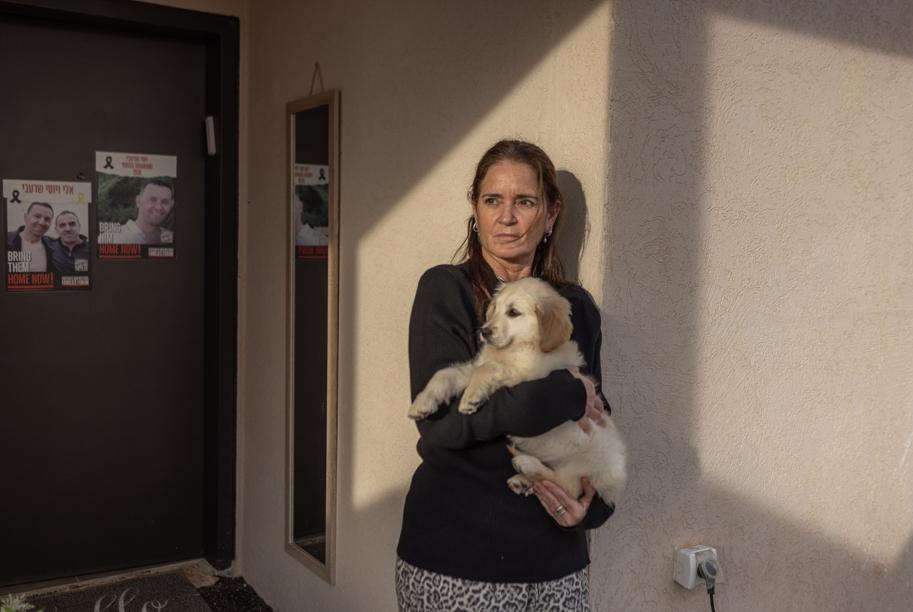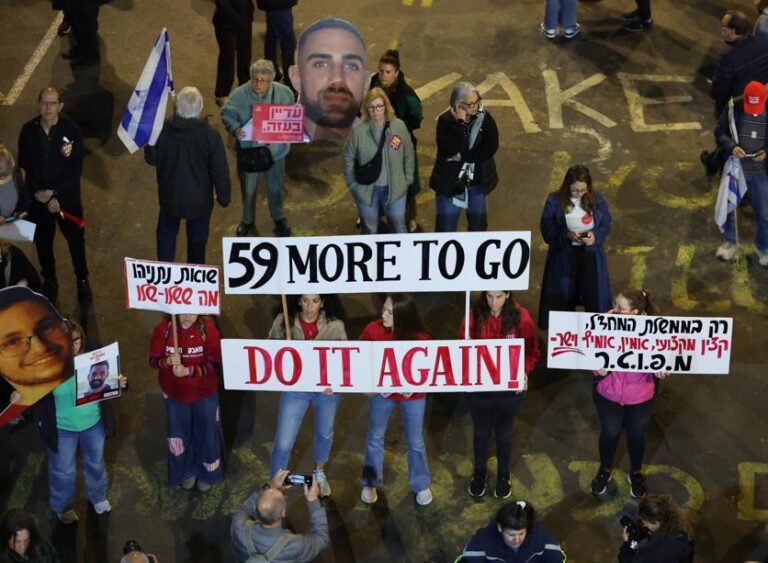
Itay Svirsky, 40, was a therapist who loved philosophy. Eden Yerushalmi, 24, was training to become a Pilates instructor. Alex Lobanov, 32, a father of three, never met his youngest child.
They are among the 41 hostages killed since being taken captive by Hamas and its allies during their Oct. 7 attack on Israel, according to an analysis by The New York Times of forensic reports and military investigations into their deaths, as well as interviews with more than a dozen Israeli soldiers and officials, a senior regional official, and seven relatives of hostages.
Some were killed by Hamas, some by Israeli fire, some from an unknown cause. The losses — and most acutely, the scale of them — are now at the heart of an anguished debate within Israeli society about whether more people could have been brought back alive if a truce had been reached sooner.
The Israeli prime minister, Benjamin Netanyahu, has long contended that only military force could compel Hamas to free the hostages. Netanyahu’s opponents argued that the longer the war, the likelier that the hostages would be executed by Hamas or killed in Israeli strikes.
The debate has gained more resonance in recent days as the country faces the prospect of returning to war since the lapse of the recent truce. The Israeli government recently upended the process by proposing a new framework, immediately rejected by Hamas, that called for a seven-week extension during which the group would release half the living hostages and return the remains of half the deceased ones.
Of the 59 hostages still believed held in the Gaza Strip, the Israel government has said that only 24 are alive. The fear and uncertainty over their fates has been seared on the national psyche.
In late February, thousands of Israelis lined the streets along the funeral route of Shiri Bibas and her two young sons, Ariel and Kfir, who were kidnapped during the Hamas-led attack on Israel and killed in Gaza. Many held signs that read “sorry,’’ an apology for not doing enough to save them.
Of the 251 people abducted during the Hamas-led raid that ignited the war in October 2023, more than 130 have been exchanged alive for Palestinian detainees. The Israeli military has retrieved the corpses of more than 40 others, many of whom were taken dead into Gaza during the attack. Hamas has handed over eight bodies as part of the latest cease-fire agreement.
A few hostages were almost certainly killed in the first days of the war, before it was possible to seal a truce, according to two Israeli officials. But many others have died since the brief first ceasef-ire collapsed in November 2023 and the fighting continued in a war that has killed tens of thousands of Palestinians.
The soldiers and officials all spoke on condition of anonymity to discuss the sensitive findings.
Although Israel and Hamas neared another cease-fire deal in July, the talks collapsed, and it took another five months to strike an agreement, one largely similar to the one discussed in the summer. Netanyahu’s political rivals and some of the hostages’ relatives have said that the months of extra fighting, while degrading Hamas and its allies in Lebanon and Iran, led to the deaths of more hostages and ultimately failed to defeat Hamas.
“We could have brought home more hostages — earlier and for a smaller price,’’ Yoav Gallant, Israel’s defense minister until November, said in a televised interview last month.
While Netanyahu’s office declined to comment, he has long blamed Hamas for the failure to reach a truce. “Only continued military pressure, until total victory, will bring about the release of all of our hostages,’’ the prime minister said last year.
The Israeli military declined to comment on the specific circumstances in which the hostages were killed but said in a statement that it has carried out operations with numerous precautions to protect the captives.
The statement added that it “expresses deep sorrow for every incident in which hostages were killed during their captivity and is doing everything in its power to prevent such occurrences.’’ The military also said that it regularly updates the families of hostages on the status of their loved ones.
Seven hostages were executed by their captors as Israeli soldiers drew near, and four others died in Israeli airstrikes, according to Israeli officials and findings of military investigations.
Three hostages were killed by Israeli soldiers who mistook them for Palestinian militants, the Israeli military said publicly; one was shot dead in crossfire. The circumstances surrounding the deaths of 26 others remain inconclusive.
In some cases, claims conflict, such as in the case of the Bibas family. Hamas said that the three were killed in an Israeli strike, but the Israeli military said they were murdered.
After examining the bodies, Dr. Chen Kugel, the director of Israel’s national forensic institute, said in a statement that there is no evidence they were killed in a bombing.
Some relatives of the hostages blame Hamas alone for these deaths. Nira Sharabi’s abducted husband was killed in an Israeli airstrike, according to a military inquiry. She said in an interview that Hamas was ultimately responsible “because they took him and put him there.’’
Others believe that the government cared more about fighting Hamas than saving their loved ones.
“The government deceived the public by downplaying the risks the war posed to hostages,’’ Merav Svirsky said.
Her brother survived an Israeli airstrike only to be executed by his Hamas captor days later, according to three Israeli officials and Svirsky, who was briefed by military.
“The captor murdered my brother. But the reason he shot him was the military’s campaign,’’ Svirsky added.
When Israel hit a subterranean command center in November 2023, the strike killed two commanders, including Ahmed al-Ghandour, a Hamas general who Israel said helped organize the October attack.
A month later, Israeli infantry scouring the site of the strike discovered the bodies of three unintended victims: an Israeli kidnapped from a music festival Oct. 7 and two soldiers captured at a nearby military base.
The military has tried to prevent harm to hostages. During the war, intelligence officers gathered information on each captive and kept records of their last known location, according to more than 12 officials.
But the military couldn’t pinpoint many hostages, especially in the first weeks of the war when information was scarce and aerial bombardments were at their most intense, according to three military officials. If there was no clear indication of a hostage’s location, the air force was able to strike, as in the attack on al-Ghandour.

